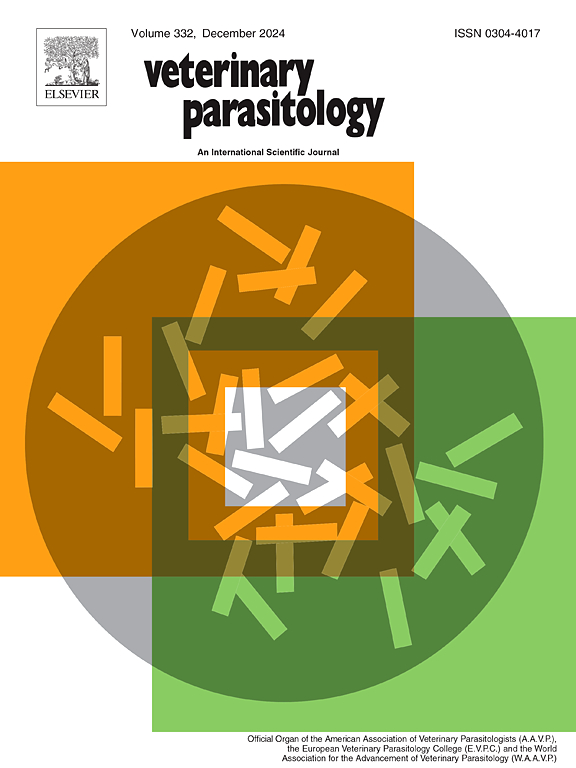Antagonistic interactions between spinosad and macrocyclic lactones in combination against larvae of the sheep blowfly, Lucilia cuprina, in vitro
IF 2
2区 农林科学
Q2 PARASITOLOGY
引用次数: 0
Abstract
Control of the sheep blowfly relies on insecticides, however resistance is currently impacting on their efficacy. The use of insecticides in combination (mixtures) is considered to be a useful strategy to delay resistance under some circumstances. The present study aimed to examine the combination of spinosad with macrocyclic lactones in order to determine if the two drug classes showed any interactions that would impact on the usefulness of a combination product for flystrike control. We used isobologram analysis to examine drug interactions in in vitro bioassays with the larval stages of the sheep blowfly. In initial single drug assays, ivermectin and abamectin showed similar EC50 against blowfly larvae, while moxidectin and spinosad were 20- and 30-fold less potent, respectively. Combinations of spinosad and each of the macrocyclic lactones showed a pattern of interactions dominated by antagonistic or additive relationships when combined at different ratios. Peaks in antagonism were associated with combinations at ratios equivalent to, or close to, the relative EC50s when used alone. The antagonism was strongest for moxidectin, with combination index values up to 1.82 at the EC50 and 3.2 at the EC90 at a spinosad: moxidectin ratio of 0.78:1. Maximum combination index values for ivermectin and abamectin at the EC90 were 1.61 and 1.42, at ratios of 27:1 and 31:1, respectively, indicating a significant degree of antagonism for both combinations. We suggest that the observed antagonism may be due to interactions at common ion channel receptors, although this requires confirmation. The study highlights the need to examine drug interactions as a component of determining the suitability of specific drug combinations for parasite control.
求助全文
约1分钟内获得全文
求助全文
来源期刊

Veterinary parasitology
农林科学-寄生虫学
CiteScore
5.30
自引率
7.70%
发文量
126
审稿时长
36 days
期刊介绍:
The journal Veterinary Parasitology has an open access mirror journal,Veterinary Parasitology: X, sharing the same aims and scope, editorial team, submission system and rigorous peer review.
This journal is concerned with those aspects of helminthology, protozoology and entomology which are of interest to animal health investigators, veterinary practitioners and others with a special interest in parasitology. Papers of the highest quality dealing with all aspects of disease prevention, pathology, treatment, epidemiology, and control of parasites in all domesticated animals, fall within the scope of the journal. Papers of geographically limited (local) interest which are not of interest to an international audience will not be accepted. Authors who submit papers based on local data will need to indicate why their paper is relevant to a broader readership.
Parasitological studies on laboratory animals fall within the scope of the journal only if they provide a reasonably close model of a disease of domestic animals. Additionally the journal will consider papers relating to wildlife species where they may act as disease reservoirs to domestic animals, or as a zoonotic reservoir. Case studies considered to be unique or of specific interest to the journal, will also be considered on occasions at the Editors'' discretion. Papers dealing exclusively with the taxonomy of parasites do not fall within the scope of the journal.
 求助内容:
求助内容: 应助结果提醒方式:
应助结果提醒方式:


